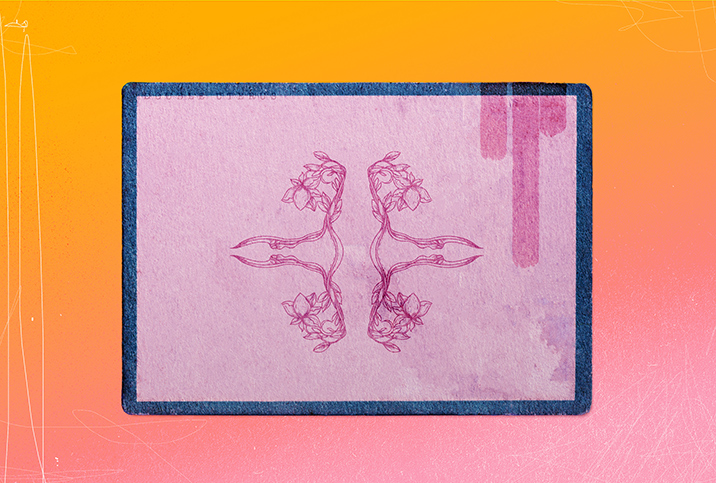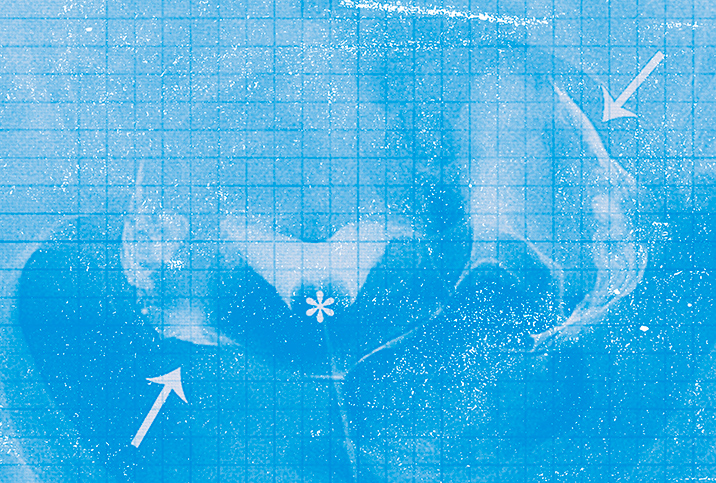Is It Possible to Get Pregnant in Two Wombs?

Having two uteruses, or wombs, is certainly possible and getting pregnant in both of them can actually happen. However, that doesn't make this condition—uterus didelphys—a blessing more than an abnormality. "Two is better than one" isn't always the case, especially when talking about the female reproductive system.
"Uterus didelphys is a uterine malformation where the patient has two uteri as a result of a failed fusion of the Müllerian ducts," said Sam Najmabadi, M.D., a board-certified OB-GYN in Los Angeles. "When the fusion occurs normally, the patient will end up with two fallopian tubes, one uterus, one cervix and one vagina. The cause of fusion failure is unknown. Partial fusion failure can occur, resulting in a spectrum of abnormalities [ranging from] minor indentation in the uterus to a partial wall in the middle of the uterus to didelphys, which is the most extreme. This group of anomalies are called Müllerian anomalies and occurs in 1 in 3,000 women."
Uterus didelphys is real
This fusion is the result of the abnormal fetal development of the Müllerian ducts. These ducts are the structures that make up the majority of a vagina during the embryonic stage, or the fifth to 10th week of pregnancy. These ducts combine to form a single uterus during a normal embryonic phase. When these ducts fail to fuse together, genital anomalies and irregularities can develop and occur. The underlying reason this happens hasn't been fully discovered by medical professionals.
"In the United States, uterus didelphys is reported to occur in 0.1 to 0.5 percent of women. A complete failure of fusion results in a didelphys, or double uterus, with two separate cervices and possibly a double vagina as well," Najmabadi said.
How is pregnancy possible in both uteruses?
Conception can occur if sperm enters either of the uteruses and successfully finds its way into the fallopian tube and fertilizes an egg. In fact, in 2019, a woman in Bangladesh gave birth to twins just less than a month after she gave birth to a baby boy in a separate uterus. The second uterus containing two babies went undetected during the first childbirth, likely because the woman was from a rural area and ultrasound scanning technology may not have been available.
Impact on fertility and pregnancy
Uterus didelphys definitely increases the risk of miscarriages and difficulties with conceiving.
"This condition can make getting and staying pregnant difficult. A person could experience multiple miscarriages or difficulties conceiving as each uterus typically has its own fallopian tube and ovary so that each side is fertile every other month," according to P. Fadwah Halaby, A.R.N.P., a certified nurse midwife and the founder of Midwife360 in West Palm Beach, Florida.
"The vaginal septum may favor one side of the vagina so that sex typically happens only on that side. Preterm birth is more common as the shape of the uterus may make it difficult for the baby to grow," she said.
Most women don't know until they get pregnant
Women often don't experience any signs or symptoms of uterus didelphys. They might have two uteruses and not know it until adulthood. In most cases, they are discovered during pregnancy or childbirth, because the majority of cases don't feature any external deformations, only internal ones.
"Persons with the condition may be asymptomatic and unaware of having a double uterus. The diagnosis is suspected on a pelvic exam or when an ultrasound of the pelvis reveals a suspicion of a double uterus," Najmabadi said. "Pelvic ultrasound 3D, an X-ray of the uterus and tubes, or an MRI can further refine the diagnosis."
There are signs that can help identify this condition early on. The most common red flag women should look out for is heavy and painful periods. This happens because a secondary uterus contributes to the shedding of the endometrium, the lining of the uterus that comprises menstrual blood.
Another common sign is pain during sex caused by a narrowed-down vaginal opening as a result of a septum or extra tissue acting as a partition inside the vagina.
"Uterus didelphys has been associated with higher rates of infertility, miscarriage, intrauterine growth retardation and postpartum bleeding. Other anomalies, like renal duplication or abnormalities, have also been associated with this condition," Najmabadi explained. "Many patients can get pregnant and deliver a healthy child without help, but the fetal survival rate is 67 percent. Premature delivery occurs in 21 percent. A breech presentation occurs in 43 percent of women, and a cesarean section is performed in 82 percent of the cases. Some patients decide to do in vitro fertilization to create embryos and transfer them into a surrogate to circumvent the increased risks associated with this condition."
It's not the end of the world
There's no denying that being diagnosed with uterus didelphys is not an easy situation to deal with, especially because of potential health consequences. It can also be worrying and stressful knowing your reproductive health may be negatively impacted and childbearing can be very risky, but it's not the end of the world.
Most women are capable of living a normal life despite their unique circumstances and won't need any treatment throughout their lives. They can have sex with their partners without unusual pain, they can give birth without needing a C-section, and menstrual pain is just about normal.
If this isn't the case and you're experiencing repeated pregnancy loss and unbearably painful sex, and living a normal life is simply impossible due to the complications brought by this condition, it is advisable that you consult a board-certified reproductive endocrinologist.


















